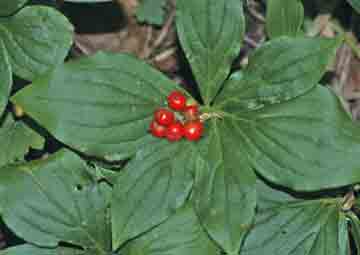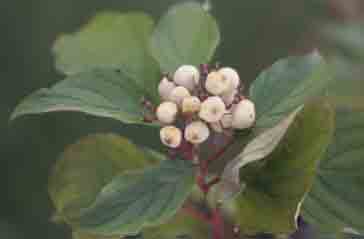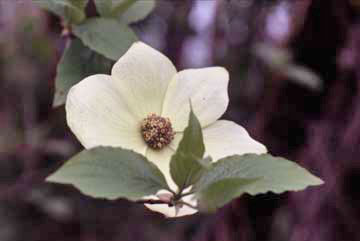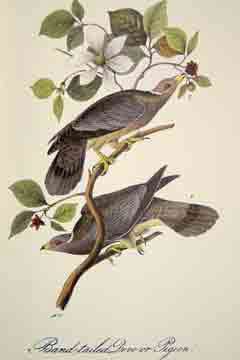





Home | Next | Previous | Index | Purchase book
Idaho Mountain Wildflowers
Dogwood Family: Cornaceae
The dogwood family small, made up of one genus and 60 species. It is represented in our Northwest by three species. All C:\AOLPRESS\wildflower\crassul.htmlare well suited for use in gardens and ornamental landscaping. Their blooms are characterized by large, petal-like white bracts, usually four, but sometimes as many as seven, and by centrally clustered inconspicuous flowers. The origin of the generic name Cornus—from which both the family name Cornaceae, and the alternate common name, “cornel” (used more often in Europe), were derived—is in doubt. The word means “horn” in Latin; possibly referring to the trees’ hard wood. The origin of “dogwood” is said to have been from skewers (“dogs”) that butchers in the distant past made from the hard wood of the European dogwood, Cornus sanguinea. The Oxford English Dictionary lists “dogwood” as being used first in 1676, in a citation describing “a fine Flower-bearing-Tree” that grew in Virginia, referring to the flowering dogwood, Cornus florida.
 |
Bunchberry, Cornus canadensis L. The bunchberry is a ground-dwelling, non-woody plant, widely distributed across northern North America, west to Asia, and east to Greenland, growing in shaded, moist forest surroundings. The plants have a rosette of five or six deep green leaves. In early summer four large white bracts, and later, bright red berries make the plants immediately identifiable. In common with other dogwoods, the bunchberry’s actual flowers are tiny. Meriwether Lewis collected a specimen on June 16, 1806, as the expedition made its first attempt to ascend the Lolo Trail. |
|
|
Red-osier dogwood, Cornus sericea L. The red-osier dogwood is a red-barked shrub or small tree that grows throughout Canada and in all but our southern states. The ovaries of its clustered small, four-petaled flowers mature into white (occasionally blue) berries. “Osier,” Latin for “willow,” is a word used for any pliant branches that are suitable for basket-making. the Latin species name sericea means “silky,” for the fine hair on the the leaves. Lewis and Clark wrote in the winter of 1804-1805, while at Fort Mandan, that Indians smoked the bark of the red-osier dogwood mixed with tobacco, to stretch the tobacco supply. |
|
|
Western flowering-dogwood, Cornus nuttallii Audubon (left) grows mostly west of the Cascade range, but a few trees are also found along Idaho’s Clearwater River. It resembles the eastern flowering dogwood, Cornus florida L., which may explain why Meriwether Lewis did not collect it in the spring of 1806. Later, Thomas Nuttall recognized that it was a new species. John James Audubon (1785-1851) included the western flowering dogwood in one of his illustrations (right) by way of thanking Nuttall for the use of ornithological material. This was the first published description of the tree, so Audubon is credited with establishing the scientific name. |
|
Home | Next | Previous | Index | Purchase book